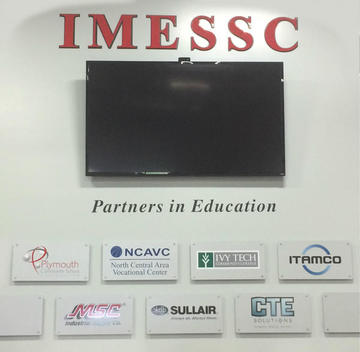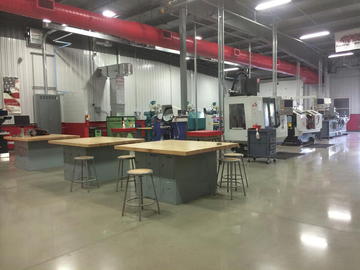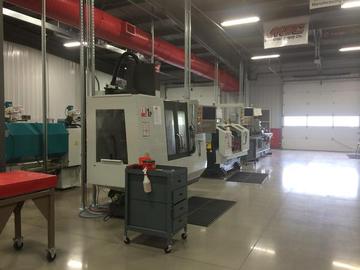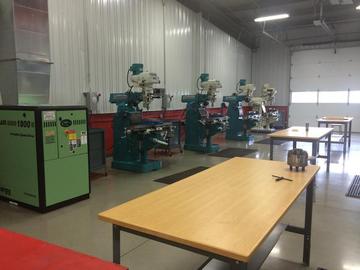Precision Machining at PCSC
Located at the ITAMCO Manufacturing Education School Service Center
IMESSC, 701 Berkley Street, Plymouth, Indiana
Instructor: Scott Kaser

Special thanks to our Partners in Education:
* Plymouth Community School Corporation for
preparing a space in the IMESSC
* North Central Area Vocational Center for
supporting the dual credit courses
* Ivy Tech for providing Mr. Scott Kaser as the instructor
* ITAMCO for the machinery
* MSC Industrial Supply Co. for supplies used in class
* Sullair for donating the air compressor
* CTE for donating equipment
* Zeiss donation of the Coordinate Measuring Machine




DESCRIPTION PRECISION MACHINING I and II: Instructs the student in shop safety, industrial terminology, hand tools, machine tooling, and measurement and layout. This course includes laboratory exercises to begin project completion of manual turning and milling operations. Also CNC milling and turning operations leading to National Institute of Metalworking Skills (NIMS) certification. This course incorporates mandatory certification assessment for the National Institute of Metalworking Skills in Measurement, Materials and Safety, Job Planning, Benchwork, and Layout, Milling I, and Turning Operations:Turning Chucking Skills, CNC Milling Operator, CNC Lathe Operator, CNC Milling:Programming Setup & Operations, and CNC Turning:Programming Setup & Operations.
MAJOR COURSE LEARNING OBJECTIVES:
Upon successful completion of this course, the student will be expected to:
- Demonstrate applications of machining speeds and feeds.
- Interpret detail and assembly drawings of tooling and related components.
- Demonstrate the correct use of basic hand tools, special accessories, and required testing equipment.
- Perform routine preventative maintenance procedures.
- Develop and utilize mathematical formulas to solve machining related problems.
- Apply basic knowledge of physics-mechanics to machining/tooling problems.
- Apply tolerance limits and fits to meet manufacturing requirements.
- Identify and demonstrate correct use of tools, materials, and equipment used in the industry.
- Think critically and independently analyze, synthesize, and evaluate technical problems and information.
- Locate technical information related to machining activities
- Solve problems and make decisions using formal process methods.
- Describe and interpret data obtained from engineering drawings utilizing oral and written communications.
- Demonstrate knowledge of blueprints with attention to signs, symbols and abbreviations.
- Read the scale on a steel rule.
- Identify the various lines found on prints.
- Interpret orthographic drawings.
- Interpret various location dimensions found on prints including circles, arcs and angles.
- Interpret external and internal thread classifications.
- Develop understanding of the metric system.
- Interpret tolerances designated on prints.
- Interpret surface finish symbols and specifications.
- Interpret geometric tolerance symbols and their usage on prints.
- Use CAD software to create 3D models and working drawings.
- Interpret and utilize conventional drafting practices using CAD.
- Relate design information to manufacturing processes.
- Interpret and create proper geometric dimensioning and tolerance.
- Analyze and interpret existing CAD files.
- Communicate effectively using listening, speaking, reading, and writing skills.
- Use quantitative analytical skills to evaluate and process numerical data.
- Solve problems using critical and creative thinking skills.
- Understand and utilize standard shop documents such as Job Routers, Job Process Sheets, Inspection Plans, etc.
- Demonstrate the ability to read part prints or technical drawings including GD&T and apply the information as it relates to gauging, dimensioning, and tolerancing.
- Perform routine preventative maintenance procedures.
- Identify and demonstrate correct setup and operation of tooling applications for the conventional engine lathe.
- Solve mathematical problems related to various machining operations.
- Identify and demonstrate correct setup and operation of tooling applications for the conventional engine lathe.
- Utilize mathematical formulas to compute coordinates and solve milling related problems.
- Identify and demonstrate correct setup and operation of tooling applications for milling machines.
- Observe an actual machining industry field site and report on that location.
- Create a process plan for project.
- Complete a several projects.
- Develop and execute CNC programs.
